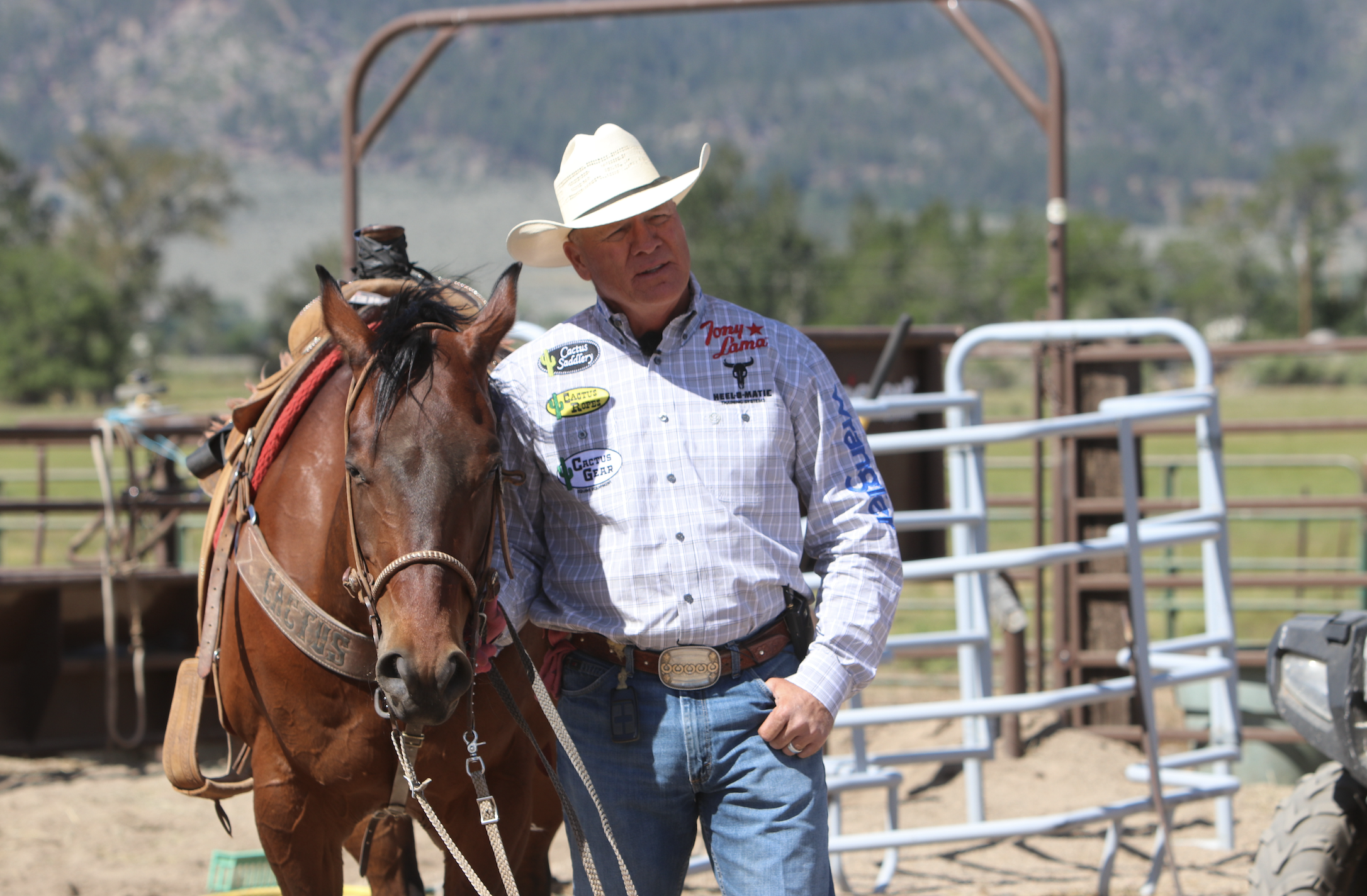I’ve always tried to have a really good horse; the best I can get. Managing a horse mentally is a big part of bringing one along and also maintaining him once he’s finished.
Age isn’t everything, but it’s an interesting aspect and if you look at the heading and heeling horses at the (National) Finals, you mostly find aged horses. It’s almost surprising their ages. A lot of them are 16-22 years old, because those are the horses you can rely on. They’re just so solid mentally that they’re going to do what you need them to do and they’re going to do it every time. You can count on that.
Horses are such a big part of roping for a living. You need to have a horse—or better yet two—that are ready for battle today and at least one that you’re bringing along.
Part of the intrigue of working on my roping and the horsemanship part is how much horses teach you. They’re all different, and yet they all have to go through the same stages of development. That’s a psychological and mental thing. To get horses to that point where they’re bombproof and solid, they need a daily dose of consistency to mold them one day at a time to where they learn a pattern.
When I’m working with my horses the thing that I have to do most is pay attention to that process and let them tell me where they’re at, and whether it’s time to speed up, slow down or just stay steady. If a horse breaks his pattern or does something different from one day to the next, something has caused that, because horses are naturally patterned animals.
If a horse breaks his pattern I first look in the mirror and point back to me to figure out what I’ve done differently. Then I can work on a game plan to make that horse psychologically comfortable, so he’s not threatened or worried about doing his job. That’s how we get back on track.
It helps to have some background and experience. The more horses you’ve ridden over the years, the easier it is to recognize a possible pattern. Some horses are naturally laid back. Others are a little racy and want to go fast. Recognizing how each horse’s brain works is really helpful. If a horse is racy by nature, you want to keep the temperature gauge down and not get it on red, so you don’t run into problems. You want to mess with those horses as little as possible, so you don’t feed into their anxiety-prone personalities.
The horses that are calm by nature sometimes need to be woken up a little bit. You’re not going to get their all-out performance if you don’t get them on their toes before you ride into the box. It’s those little things—reading the signs on each horse’s temperament and way of thinking—that help you know how to get the best out of them. Treat each horse as an individual, just like you do people.
Tough, strong, fiery horses are usually the ones that are good enough to make it at the top level. But there’s no substitute for saddling them every morning, riding them and using them. When they start to get good psychologically is usually at about 7-8-9 years old. That’s when they typically start to focus so they can do their job over and over again. But those horses still need to be used to keep their energy level steady so they can maintain that focus. A lot of horses work best when they’re a little bit tired—even my 20-year-old, good horse. There’s a reason for the old saying: “What makes a good horse is long days and wet saddle blankets.”











